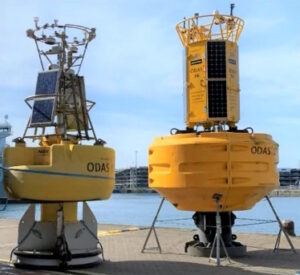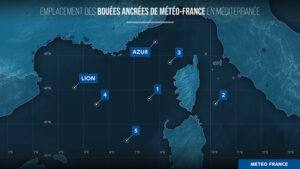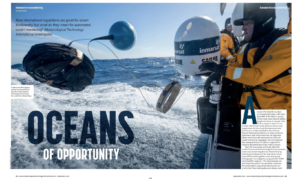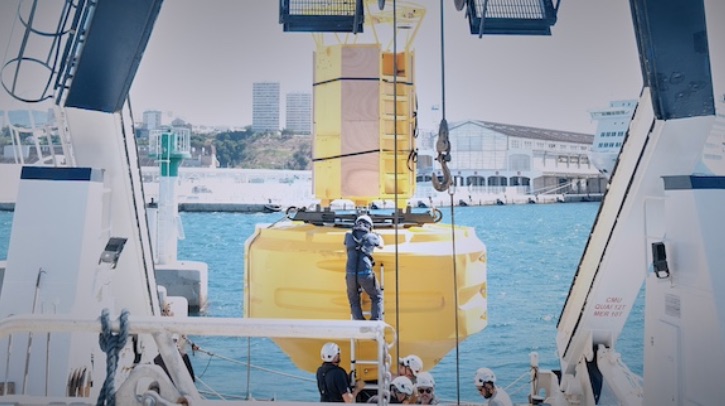One year after launching its first meteorological buoy off the coast of Ajaccio, Météo-France is strengthening its observation system at sea by deploying a second buoy anchored off the coast of Porto-Vecchio in Corsica. In total, five buoys will be installed in Corsican waters by the end of 2024.
The launch of the meteorological buoys was entrusted to the Interregional Directorate of the Mediterranean Sea (DIRM MED), as well as to the Lighthouse and Beacon Armament. Météo-France will lead the design, assembly, operation and maintenance of the buoys.
Meteorological parameters

The anchored buoys will be equipped with two independent weather stations, powered by solar panels. Their framework is formed by a yellow float, a steel keel and a mast on which sensors are attached. Each buoy is up to 7m high (half of which is submerged), and their anchor lines can reach 6km deep in the sea.
The anchored buoys measure and transmit in real time wind speed, air temperature, atmospheric pressure and air humidity, as well as oceanographic parameters (such as wave height or frequency, temperature, and salinity of the sea). These measurements are recorded by sensors. The data is transmitted live and feeds the various digital models used by Météo-France forecasters.
These five buoys feature a closed cabin at the top of the buoy to protect the electronic heart of the station and facilitate its maintenance, either on a boat or directly at sea. The anchored buoy can also be transported inside a standard container, and eco-responsible materials, such as an empty float, food-grade plastic, ultra-resistant and recyclable elements, have been used in its design.
Mediterranean weather phenomena
The deployment of five buoys in the Mediterranean is intended to improve the ability to anticipate bad weather hitting the region by improving the coverage of sea surface observations. They also collect more information on dangerous phenomena, such as intense rain or storms before they threaten the coasts of Corsica and the Mediterranean arc.
During dangerous weather events, such as a storm or even a Mediterranean episode, the data transmitted by the buoys is expected to be particularly valuable. The data, which is transmitted in real time, will make it possible to confirm or rule out a scenario and to realign the monitoring of the episode on the basis of proven observations.
For example, the buoy deployed in June 2023 made it possible to provide important information during violent storms on August 27 and 28 last year in the Mediterranean. The scenario retained by forecasters had the storm passing south of Corsica with violent gusts expected on the island. The data transmitted by the buoy during the advance of the storm made it possible to confirm the trajectory and its intensity. An orange warning for thunderstorms had been issued for Corsica.
Météo-France’s deployment timeline

Five anchored Météo-France buoys will be deployed by the end of this year. The first buoy was launched in June 2023 off the coast of Ajaccio. The second, off the coast of Porto-Vecchio, was deployed on June 19, 2024. The third buoy will be installed in September 2024 off the coast of Calvi and the fourth and fifth buoys will be installed by the end of 2024, in the southwest of Corsica.
For more of the top insights into automated ocean monitoring, read Meteorological Technology International’s exclusive feature, “What do new international regulations mean for automated ocean monitoring?”, here. 



